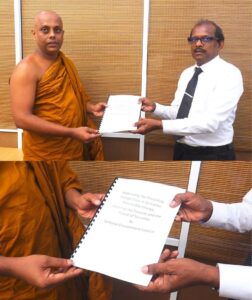Sri Lanka: Between economic recovery and relapse
6 min read
By Aditya Gowdara Shivamurthy
On 20 March 2023, the Executive Board of the International Monetary Fund (IMF) approved a four-year US $2.9 billion bailout package for Sri Lanka. This approval has made way for an immediate IMF disbursement of US$ 333 million and enables the country to access an additional US $7 billion from other countries and institutions. To tap into the IMF package, Sri Lanka had to push through difficult fiscal reforms and seek debt restructuring guarantees from its major lenders—India, Japan, and China. Having received the guarantees, Sri Lanka will now have to work out its debt restructuring plans by abiding by the IMF’s policy prescriptions and maintaining economic stability. The nation’s future chances of an economic recovery or a state of complete relapse will depend on how it will navigate the upcoming external and domestic pressures.
Bailing Sri Lanka out The story so far
India’s assistance to Colombo derives from its humanitarian concerns and national interests. The assistance has been holistic and is worth over US $3.9 billion. It consists of currency swaps, grants, credit lines, humanitarian supplies, and infrastructure development. With the assistance, New Delhi has also increased its presence in Sri Lanka and the Indian Ocean. India will be constructing a Free-Floating Dock Facility in Sri Lanka; a Maritime Rescue Co-ordination Centre (MRCC), one sub-unit of which will be installed in the China-operated Hambantota port; and has presented a Dornier aircraft to Sri Lanka. New Delhi has also committed over US $75 million to develop the strategically-located Trincomalee Oil Tank Farm. Multilaterally, India has reached out to its QUAD partners (US, Japan, and Australia), furthered Sri Lanka’s cause in the IMF, and also became the first country to assure debt restructuring.
China’s debt profile in Sri Lanka rose from 0.3 percent in the 1990s to nearly 20 percent (7.4 billion) in 2022—making it Colombo’s largest bilateral lender.
Japan has been Sri Lanka’s long-term traditional donor and development partner. Its percentage share in Sri Lanka’s external debt decreased from 32 percent in 2000 to 8 percent in 2022 (over US$2.7 billion). These loans were offered at low-interest rates and higher payback periods. Unlike India, Japan’s assistance to crisis-hit Sri Lanka has been on the lines of humanitarian aid. Since the beginning of the crisis, Japan stalled its projects and investments and provided the indebted country with humanitarian assistance worth US$ 104 million—the largest ever provided by Japan to Sri Lanka. Japan has also taken a proactive approach in negotiating Sri Lanka’s economic crisis with the Paris Club and other major bilateral creditors. Japan and Sri Lanka completed their negotiations on debt restructuring in early January. And in February, the Paris Club—which includes other 21 members—unanimously assured the IMF of Sri Lanka’s debt restructuring.
China’s debt profile in Sri Lanka rose from 0.3 percent in the 1990s to nearly 20 percent (7.4 billion) in 2022—making it Colombo’s largest bilateral lender. Nearly US $4.3 billion of these loans are from the China EXIM bank, and US $3 billion from the China Development Bank—both managed by the cadres of the Communist Party of China. China had, for long, deterred Sri Lanka from approaching the IMF and had offered new loans to help it repay its previous debts. As the crisis deepened, China also began to ignore Sri Lanka’s request for a new US$ 4-billion assistance. Beijing’s hesitancy to loan restructuring further compelled Colombo to miss its IMF deadlines in December and January. Only when India provided debt assurances to Sri Lanka did China and its EXIM bank agree on a two-year moratorium. In early March, China’s EXIM finally agreed on debt restructuring as the IMF did not endorse the previously offered moratorium. The China Development Bank has granted no such assurances yet.
A new round of cheques and balances?
With the IMF board approving the package, Sri Lanka will now have to prioritise economic stability and finalise debt restructuring plans with its lenders. But, as the saying goes, there ain’t no such thing as a free lunch. Through coercion or persuasion, major lenders will try to leverage the debt-restructuring negotiations to further their interests in Sri Lanka.
Sri Lanka has also planned to address its asymmetric trade with India and will be requesting the former to ease quotas on Sri Lankan goods
In India’s case, Sri Lanka has shown more interest in resuming the Economic and Technology Cooperation Agreement (ETCA) that has been on a halt since 2019. Sri Lanka has also planned to address its asymmetric trade with India and will be requesting the former to ease quotas on Sri Lankan goods. On the other hand, India is also expecting to invest more in the tourism, energy, and infrastructure sectors. New Delhi has also urged Sri Lanka to promote the reconciliation of Tamils and implement the 13th amendment of the Constitution.
With Japan, Sri Lanka is keen on investments in renewable energy, railways, public transport, international airports, and water supply. The approval of the IMF bailout package has also allowed Japan to resume its projects in Sri Lanka worth US$ 1.6 billion to US$ 2.5 billion . Sri Lanka is also reoffering the East Container Terminal to Japan, and Japan has shown interest in developing the Trincomalee Harbour. Concerns about tax issues, the dollar crisis, and the unilateral cancellation of projects—as seen with the East Container Terminal in 2021 and Light Rail Transport Project in 2020—have continued to limit Japan’s interests and investments in the country. To promote investments from Japan and others, Sri Lanka will be passing a budget act that will ensure the continuation of crucial projects and policies, regardless of changes in the government.
Unlike Japan and India, Sri Lanka’s negotiations with China have not mentioned any new investments. For its part, Sri Lanka might attempt to distance itself from Beijing’s new investments considering its role in debt-trapping and the passivity displayed during the whole crisis. However, China will likely leverage debt-restructuring talks to challenge other players in the region. Beijing’s rush to offer a two-year moratorium to Sri Lanka following India’s assurances only substantiates that Colombo continues to be crucial for Beijing’s strategic thinking. New strategic investments from India and Japan will only motivate Beijing to do the same. Based on China’s previous interactions with Sri Lanka, there is also a possibility that Beijing will continue to push Colombo to expedite the Free Trade Agreement negotiations and perhaps even increase the presence of Chinese ships in the Indian Ocean.
Domestic pressures and constraints
That said, the interests of external players may also not bide well for Sri Lanka, especially with the current government’s lack of legitimacy. In the case of the 13th Amendment Act, the majority of the populace and political parties are still against its full implementation. India should be cautious while urging for its full implementation as it might trigger more political instability and economic uncertainty.
The dollar crisis, and the unilateral cancellation of projects—as seen with the East Container Terminal in 2021 and Light Rail Transport Project in 2020—have continued to limit Japan’s interests and investments in the country.
Economically, Sri Lanka’s domestic savings and investments are hard hit by the crisis. In this regard, the government will aim to sell ports and state-owned enterprises to foreign investors. As Sri Lanka’s history shows, such foreign investments have often created speculations of compromise in sovereignty, leading to criticism and protests from the Sinhala and the left factions. With a public that is already upset with the increase in taxes, decrease in government jobs and selling of state enterprises, the possibility of fierce opposition to foreign infrastructure investments looms large. Prospects of such speculations and opposition will only exacerbate if the government passes the act that makes investments immune to changes in government.
Sri Lanka’s path to economic recovery is embedded with challenges. As Sri Lanka enters the crucial phase of debt restructuring, it will have to balance its domestic and external pressures. It will have to continue seeking reforms to improve revenues, debt management and exports and to avoid its balance of payment and forex crisis. Failing to balance and implement these reforms will only put Sri Lanka back into a state of economic relapse.
(Aditya Gowdara Shivamurthy is a Junior Fellow with ORF’s Strategic Studies Programme. He focuses on broader strategic and security developments within South Asia, India’s relations with the region, and foreign policy of South Asian states.)





